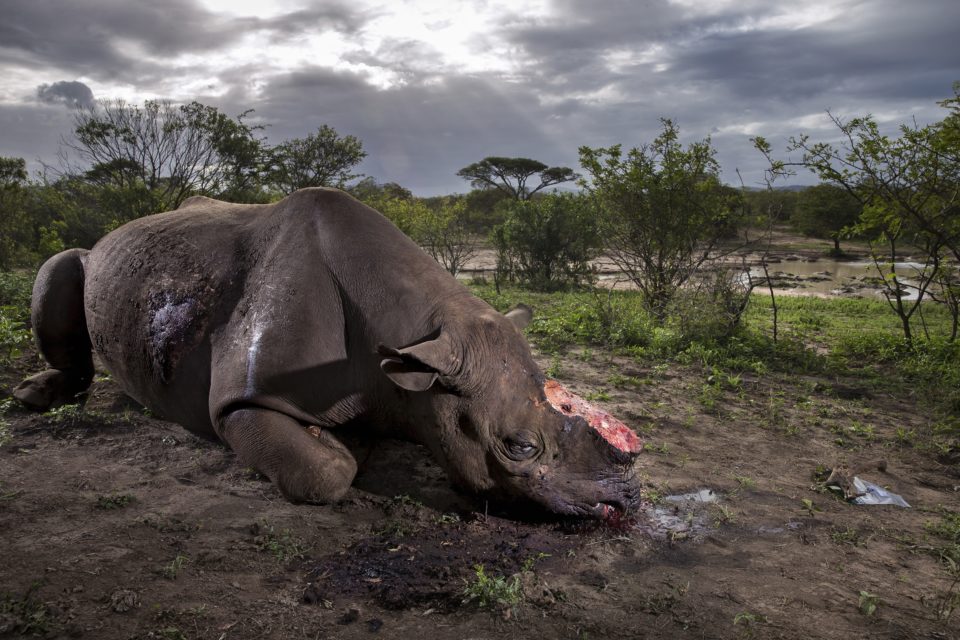[paypal_donation_button]
The prestigious Wildlife Photographer of the Year award has been handed to a photojournalist who captured a criticially endangered black rhino lying dead with its horn cut off. Brent Stirton’s “Memorial to a species” was taken on South Africa’s Hluhluwe Imfolozi Game Reserve and is one of thirty such scenes he captured as he covered the story of the animal’s decline. Black rhinos are now critically endangered due to hunting, with around 5,000 remaining in the wild. Once more numerous than the white rhino, the species has faced renewed poaching in recent years despite conservation efforts. The animal is now largely confined to four countries – South Africa, Zimbabwe, Namibia and Kenya – after another one subspecies, the West African black rhino, became extinct in 2011.
Nat Geo Wrote on their Instagram Account :
Poachers killed this black rhinocerous for its horn with high-caliber bullets at a water hole in South Africa’s Hluhluwe-Imfolozi Park. They entered the park illegally, likely from a nearby village, and are thought to have used a silenced hunting rifle. Once the most numerous rhino species, black rhinos are now critically endangered due to poaching and the illegal international trade in rhino horn, one of the world’s most corrupt illegal wildlife networks.
–
@brentstirton was awarded the prestigious @nhm_wpy Wildlife Photographer of the Year 2017 title for this compelling image taken on assignment for @natgeo. Brent’s image will be on display with other images selected by an international panel of judges at the 53rd Wildlife Photographer of the Year exhibition at the @natural_history_museum in London. #WPY53[paypal_donation_button]




